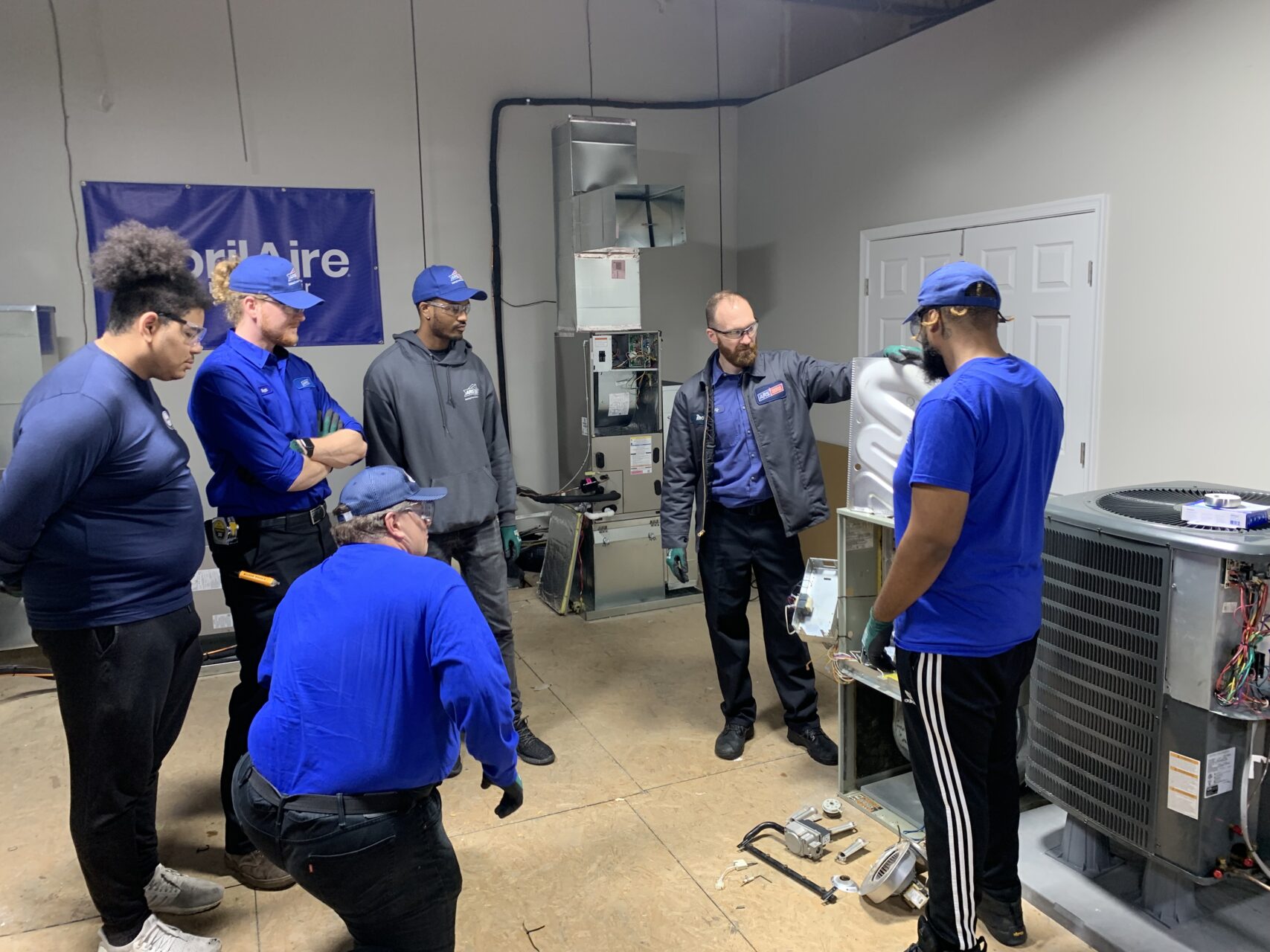In the home services industry, it is essential to perform regular diagnostics on systems to keep them functioning efficiently and extend their useful life. American Residential Services, one of the nation’s largest HVAC, plumbing and electrical companies, conducted a diagnostic on their own learning and development function. From this diagnostic, L&D at ARS was able to implement some needed repairs and maintenance to their system. The primary changes occurred in three areas: technical training, management training and technology use.
Technical training diagnosis
Historically, HVAC companies have primarily used classroom training during team meetings to educate their workforce on technical information. This method of training includes a one-way presentation of information that is generally followed by a demonstration or role-playing. While some form of technical training was taking place regularly, much of it was reactionary to an event that occurred the previous week. There was a lack of consistency in the material covered, both in content and in delivery.
Repair/maintenance: ARS still utilizes classroom training where appropriate, but also includes online training to support this delivery. The L&D team worked with operators across the country to identify relevant topics for each industry and then created short, information-packed online training courses that are assigned directly to the technicians, plumbers, and electricians on a regular basis through the learning management system.
Branch leaders can monitor the performance of their teams through a reporting feature and can then review the topic during team meetings and answer any outstanding questions or clarify any content as necessary. This has provided a much more consistent delivery of content as each person receives the same information in the same manner. The use of role-plays can still be included when relevant to the topic. Engagement in these training events has increased by over 30 percent and continues to climb.
Management training diagnosis
Management training at ARS was previously delivered in a classroom and included only those in a specific geographical area or division. The training was delivered over a few days and while the content was sound, the instructors varied in each area and each instructor highlighted content that was important to them or their division while providing a more high-level overview of the remaining content. The training did not include any pre-work or post-class assignments to reinforce the material and follow-up was inconsistent as well. Also, because of the training being provided in specific geographic areas, there was little opportunity for managers to build relationships with others outside their division.
Repair/maintenance: Enabling leaders to be successful in their roles is crucial to their overall success as well as the overall success of ARS. Management training provides the foundational training that sets them up to be successful in the short- and long-term. To enhance the existing program and increase its effectiveness, the L&D team transitioned the delivery from a few days in the classroom to the delivery of a specific topic each week delivered virtually. Participants are assigned pre-work on the topic of the week, attend virtual training with other members of the cohort and complete an assigned homework course as well as a practical application assignment. The final step of each week’s training is for the member of the cohort to share a key takeaway or best practice with the rest of the group.
Because the training is delivered virtually, cohorts consist of managers from across the country, and relationships—which are built over the 10-week training program—continue to endure long after the program ends. In addition to the satisfaction of completing the program, participants receive a digital credential detailing their accomplishments. This credential can be shared on social media platforms such as LinkedIn. Employee retention of the teams managed by those who have attended this structured training continues to outpace the company average.
Technology use diagnosis
While ARS uses an LMS, it is traditionally used for safety training and any compliance-related training. With a lack of L&D options, employees had little reason to access the platform regularly.
Repair/maintenance: In addition to the previously mentioned short, information-packed online training courses that are assigned directly to the technicians, plumbers and electricians, the L&D team also began creating content to support other functions within the organization. These offerings covered a variety of areas such as employee health and wellness, customer service, payment card industry compliance, Microsoft platforms, cybersecurity and even additional technical training beyond the assigned courses.
Beyond course content, the L&D team provides access to various e-books and videos for those who wish to continue their personal and professional development, and new opportunities are added regularly. As a nationwide company, ARS has a large network and to help take advantage of these offerings, group discussion boards have been created on the LMS. These discussion boards cover a variety of topics and allow users from anywhere to pose questions, answer questions or simply get ideas from conversations that are taking place.
To better support the various changes mentioned, ARS switched to a different LMS provider, but the momentum continues to grow. Over the first two months with the new platform, over 100,000 online courses were completed!
As L&D professionals, we are certain to face the “we have always done it this way” mentality, but to keep our systems running efficiently and effectively, and to better support the growth of our people and our organizations, we need to perform our own internal diagnostic from time to time and make the necessary changes and updates.















